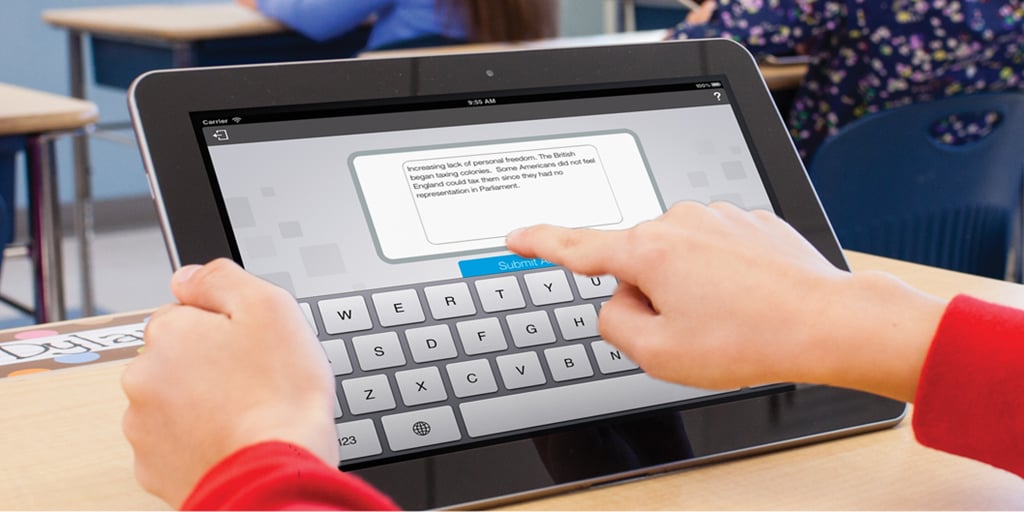
At the end of a section of learning, it’s time for the teacher to create an assessment. This could be the end of a unit or chapter, but for what we are discussing today, a summative assessment needs to be created. Instruction is over, and we need to see what the student knows and has retained.
Where should a teacher start? The first question that should always be asked is, “Do I even need an assessment?” This may seem like a crazy question. “If I don’t give a test, what will I put in the gradebook?” But if we stop to think about it, not all learning is created equally. In the mind of a student, if something is tested, it matters because it is for a grade. So as teachers, if we test everything equally, we are sending the message that everything matters to the same degree.
I would contend that most teachers don’t believe this. Does having the correct verb tense matter as much as knowing what a gerund is? Is the ability to solve an equation equal to the ability to find the area of a circle? So, before we give a test just because the chapter is over, make sure to self-assess what really needs mastered—and therefore assessed.
Measuring Students’ Knowledge
If a test is needed, what’s the next step? I would recommend not just pulling out the end-of-unit test from the textbook series and giving it to the students. These assessments are a good starting point, but they probably aren’t going to meet the needs of the students. To use them as a starting point, go through the assessment and measure the cognitive level of each question. Most of the time, we find that the majority of the questions are at a basic recall or knowledge level—this is particularly true of multiple-choice questions. Even some of the short-answer questions on a test don’t really expect students to analyze or evaluate at a higher cognitive level.
Next, see how hard (or easy) it’s going to be for the student to correctly guess the answer. This means that some questions are much easier for students to guess a right answer (think true/false vs. essay response). Most teachers are not assessment gurus who know the ins and out of the psychometrics that test makers use to create nationally normed assessments, but that is okay. Teachers don’t have to be rocket scientists to figure out that if too many questions can be guessed on, the data isn’t very reliable. A few multiple-choice questions are okay in a test, but if that is all the test is composed of, we might not achieve the goal of measuring what the students really know.
Creating Your Assessment
If a test is required and a teacher feels they have a reliable handle on the questions being asked, here are a few other things to think about:
- How long will the students need to finish the assessment? This question is very practical, and it does make a big difference. If students need more than one class, will the data be reliable? And is it worth sacrificing the instructional time to do all that assessing? There is no right answer to this, but these are reflective questions the teacher should ask.
- How much time will you have for grading? Again, this is very practical, but there is a reality to the workload of a teacher. Essays are probably the best way to gather authentic information about student learning, but unless a teacher has a great deal of time to provide good feedback, essay tests can be fairly impractical. With that said, essay tests are critical for students to be able to complete. To compose while thinking is a higher-level skill that is needed in the postsecondary world. If students are accustomed to only multiple-choice tests, they will struggle with this in college and beyond. Make sure there is time for grading, but don’t cheat the students by only ever giving assessments that are quick to grade.
- Could using technology help either of these time issues? This is probably one of the most critical questions that doesn't get asked. There are some great tools for collecting feedback from students quickly, and many of these can be used for summative assessments at the end of learning. Take for example the MimioVote™ formative assessment system, which is great for quick formative assessments. This can also be a time-saver for teachers who need to give a summative assessment, but would like to be efficient with their time and grading.
By reviewing all of these concepts, which teachers should really do for any assessment they give, data will be better and both the teacher and student will know if the instruction has created retention in the information presented.
How do you assess your students’ understanding of concepts learned in class? Want to explore assessment technology and solutions? Check it out now.>>



